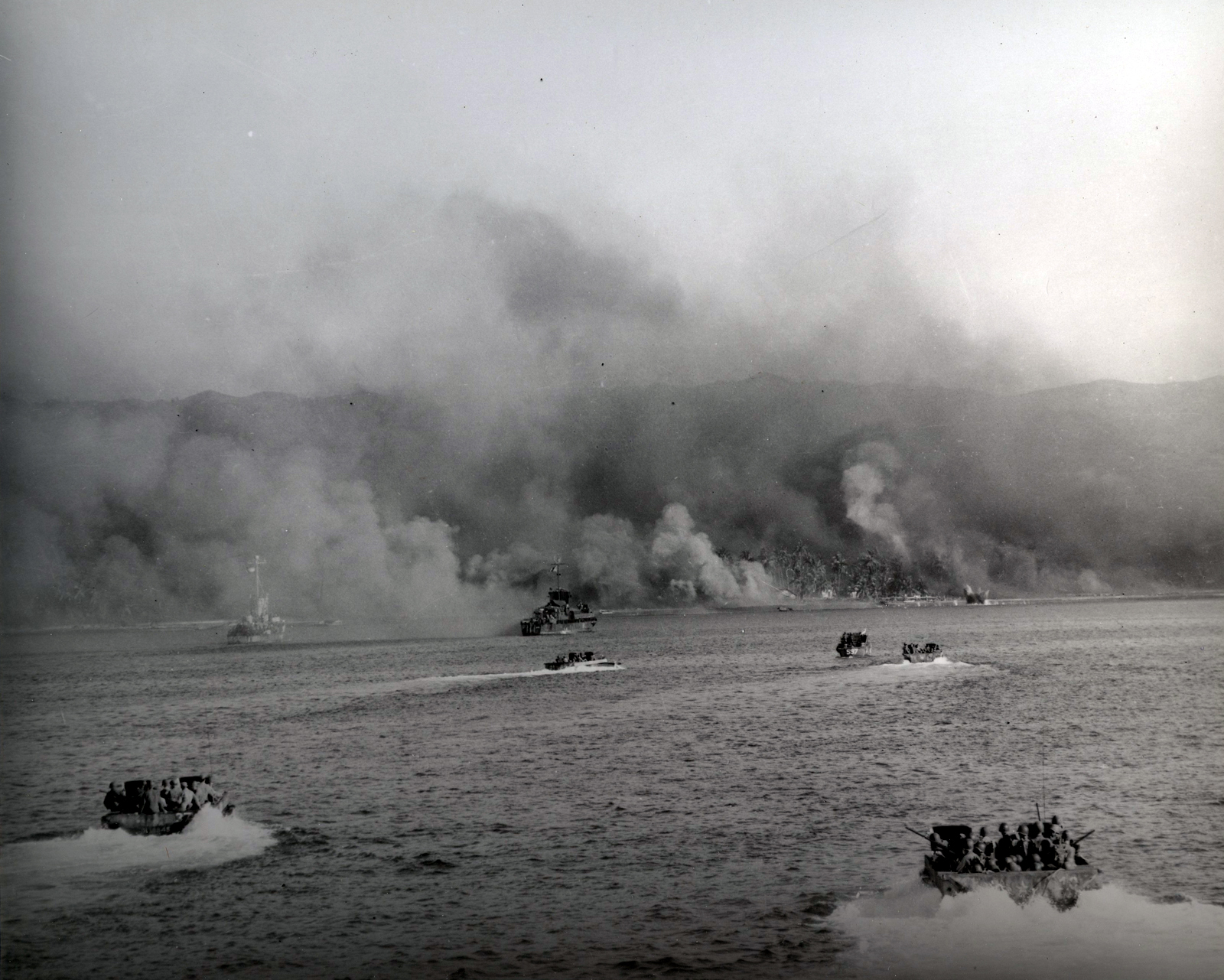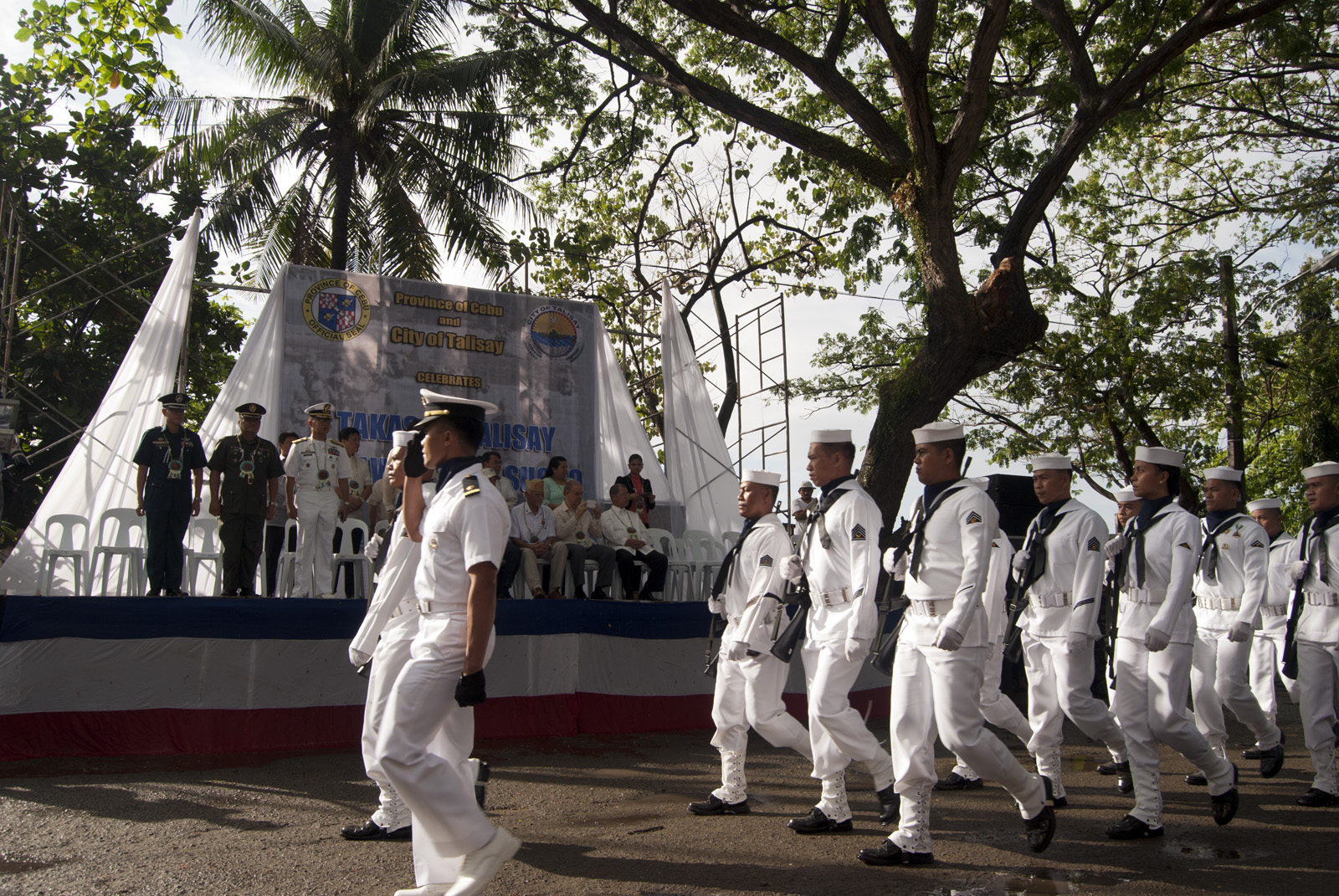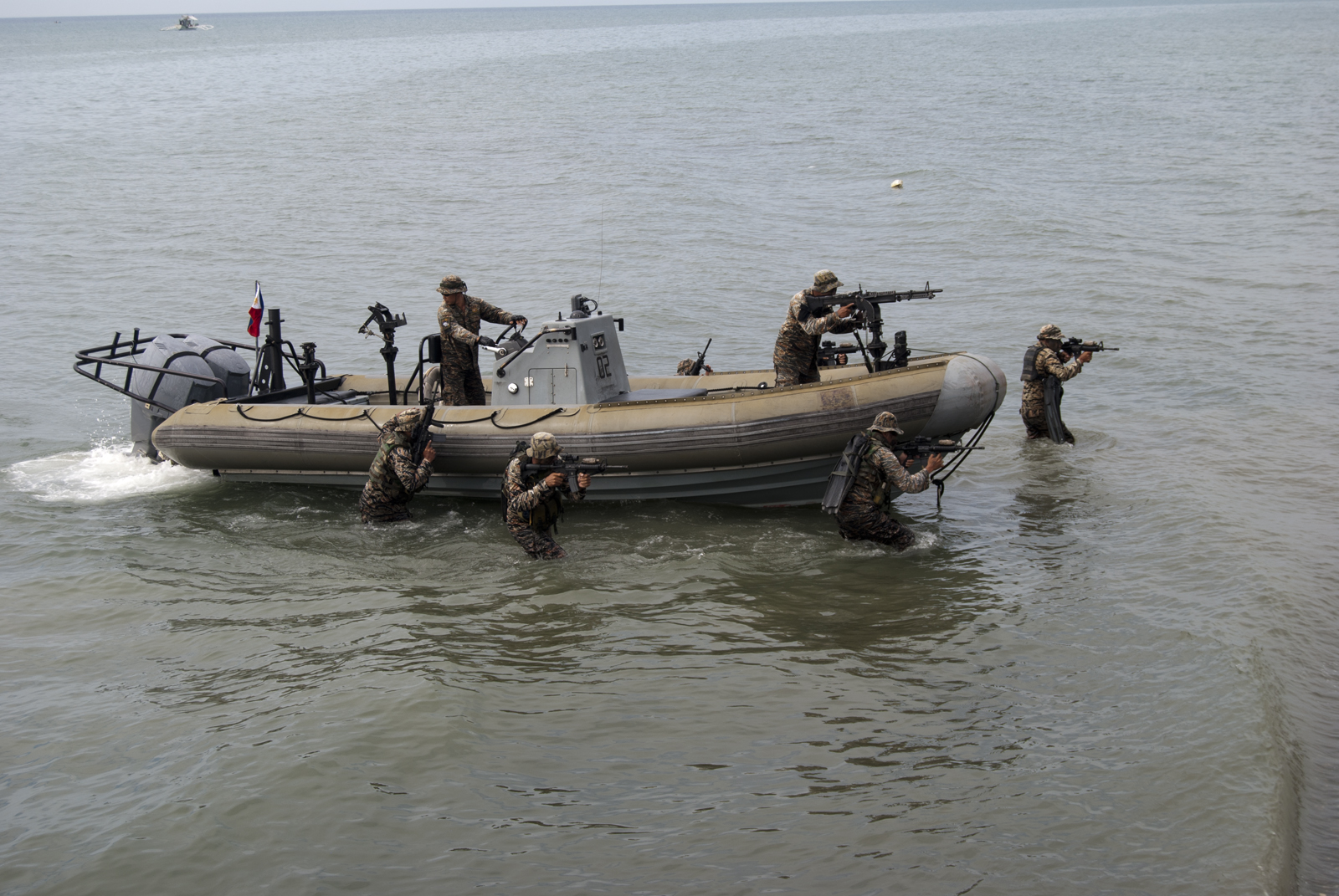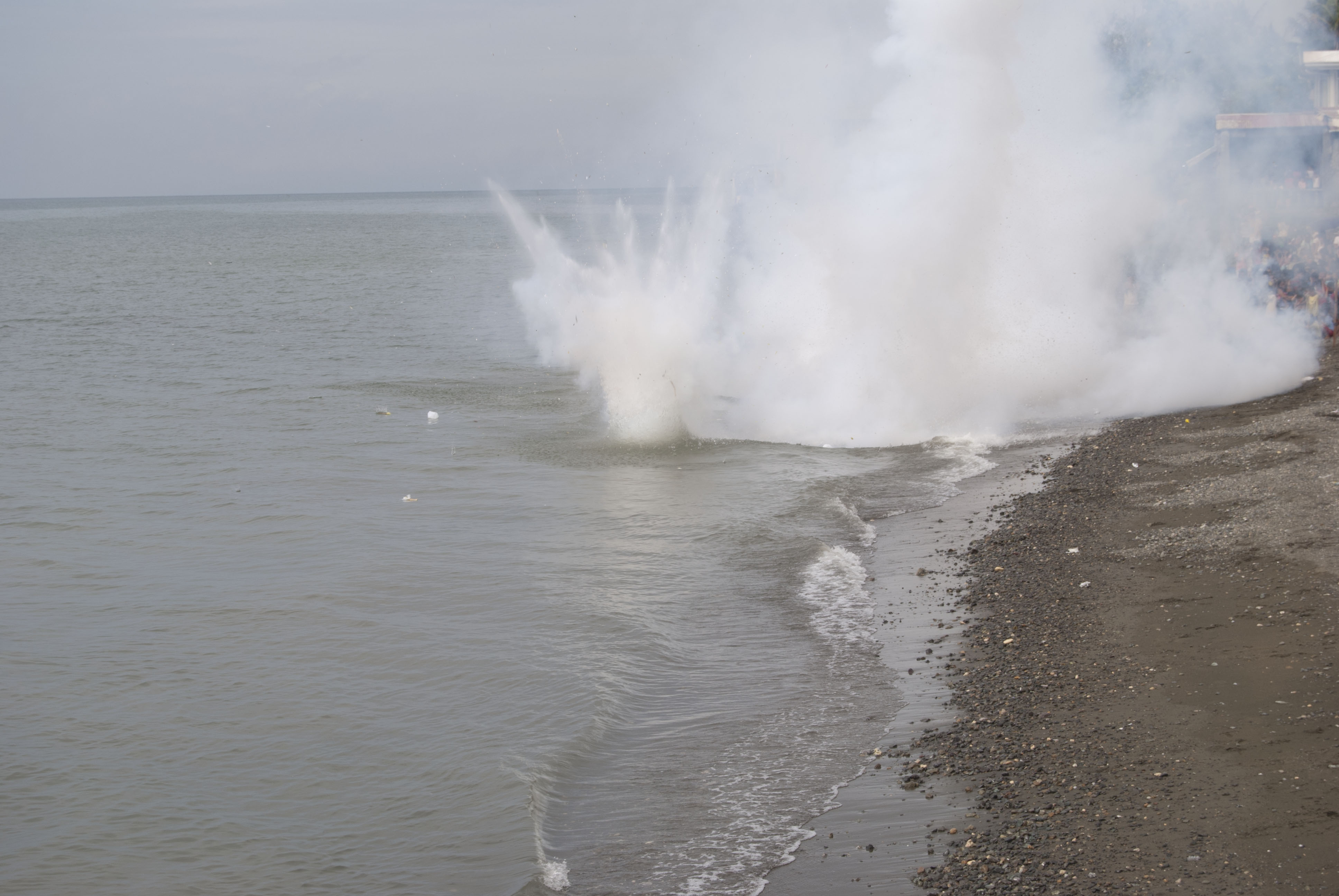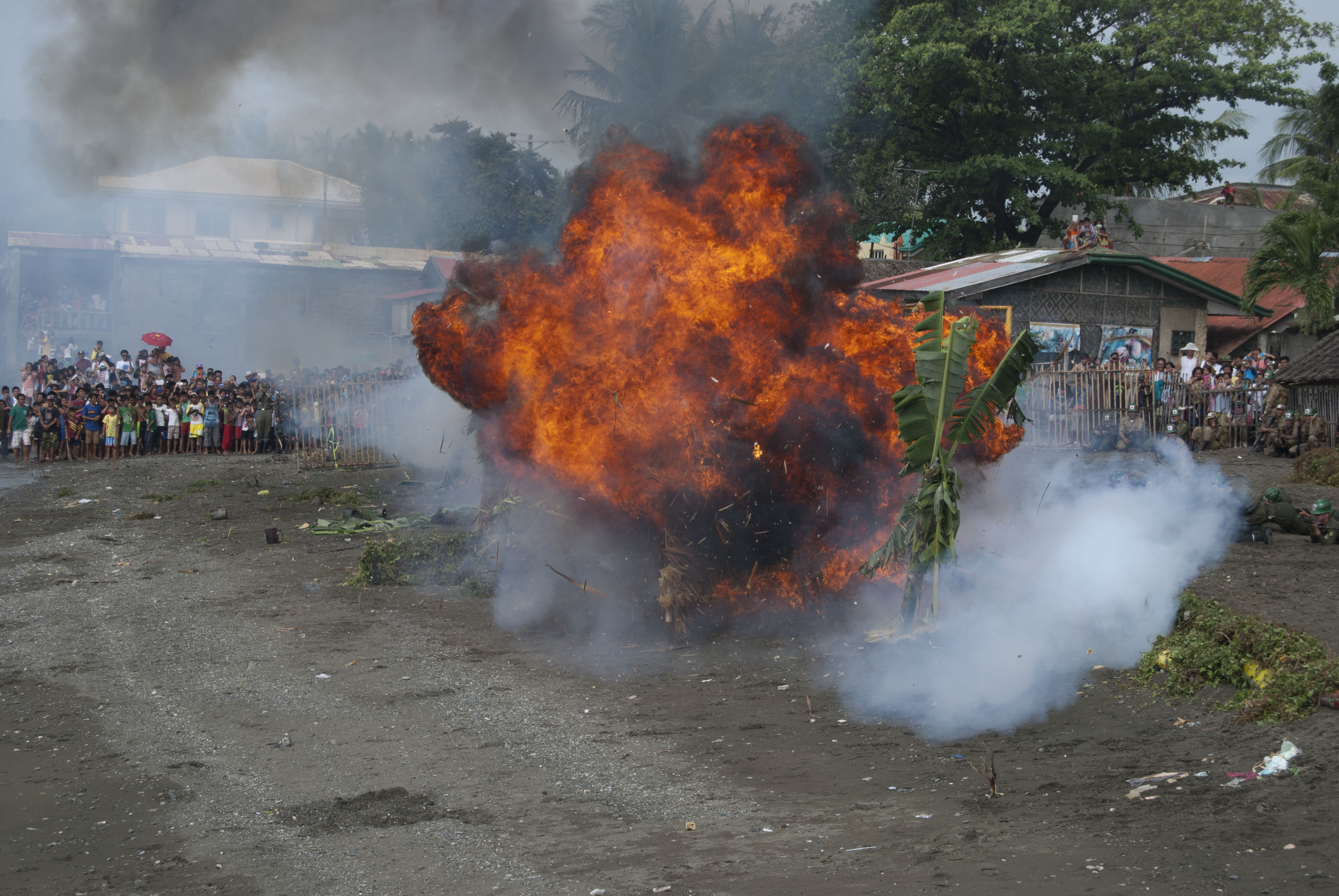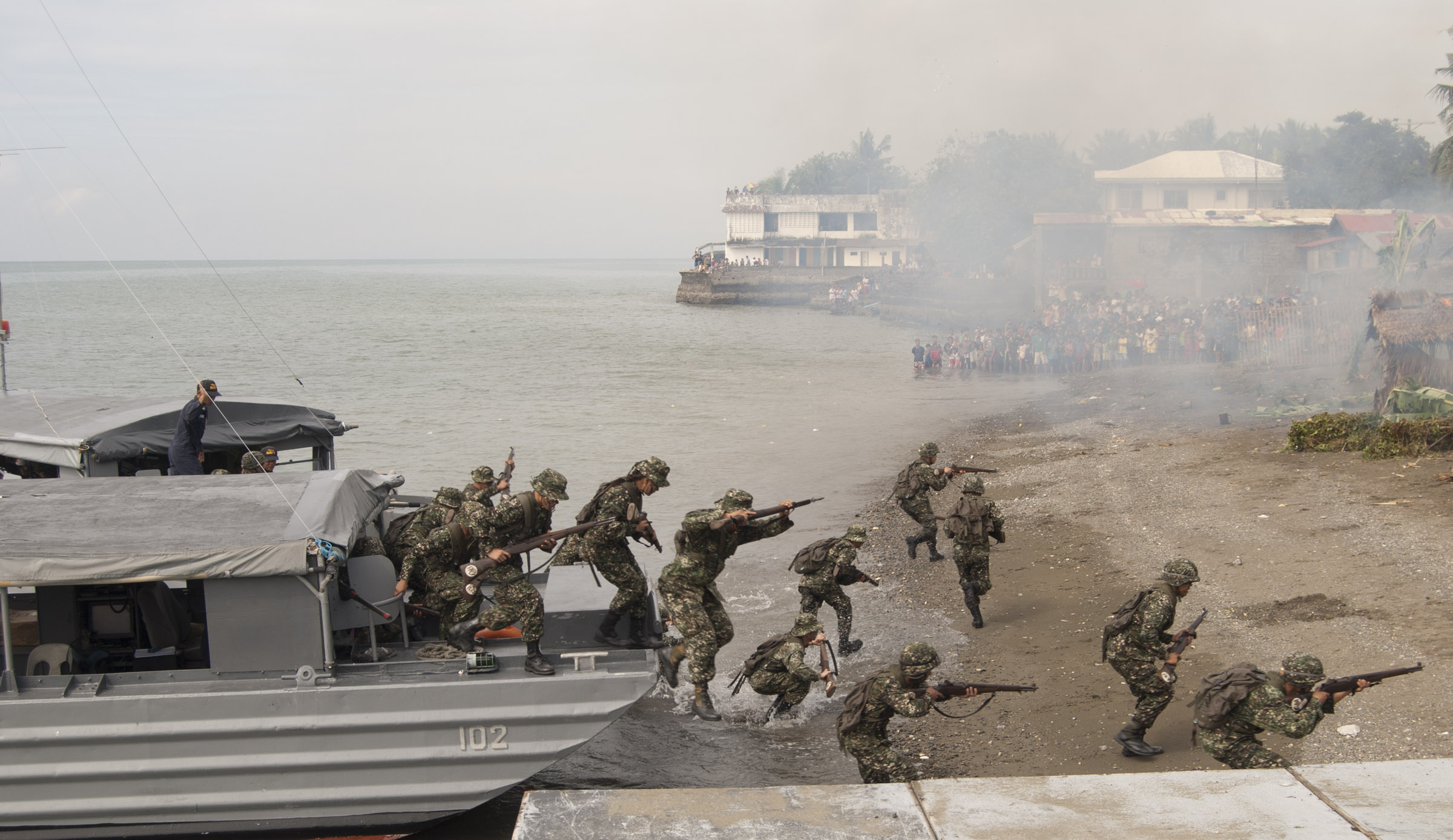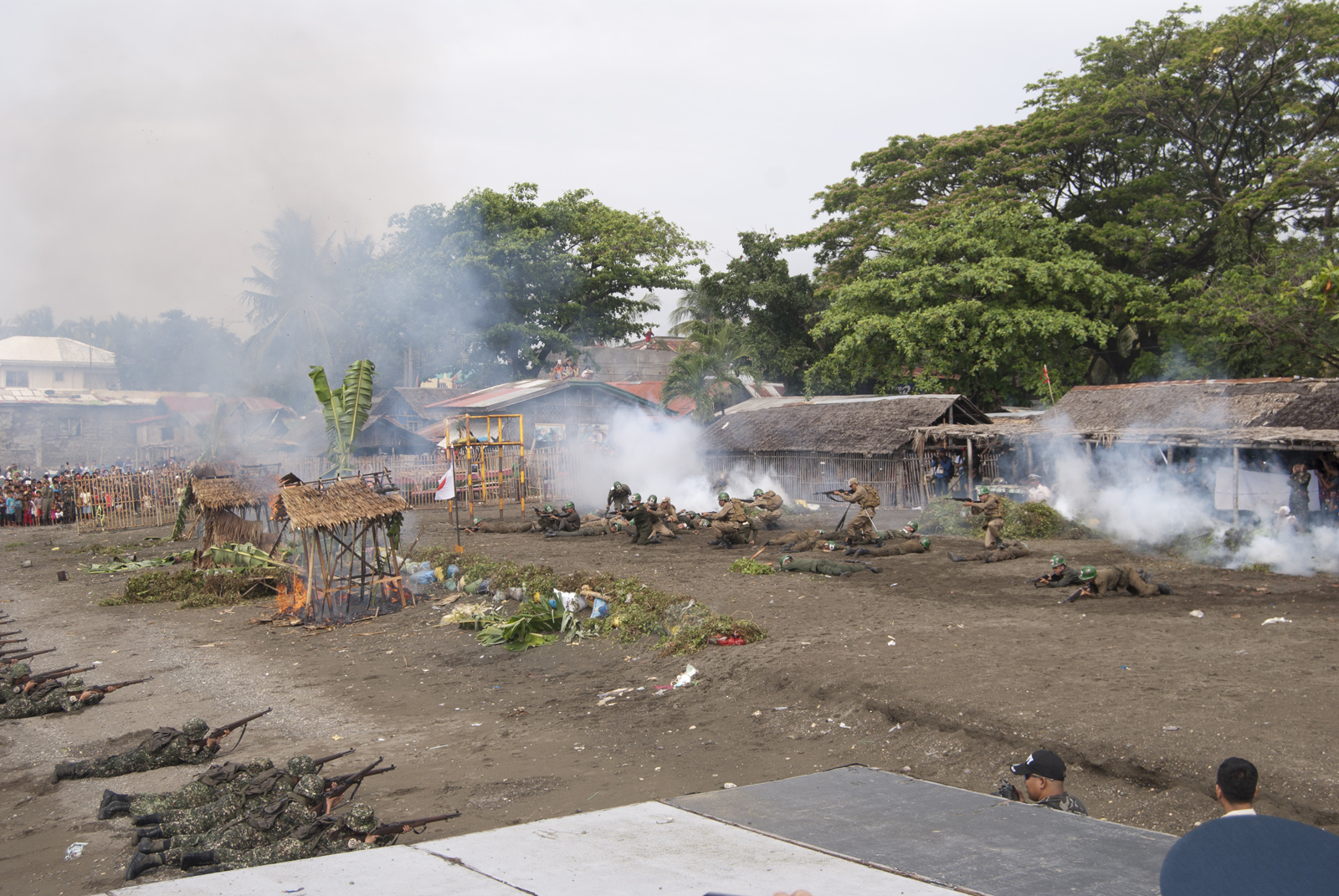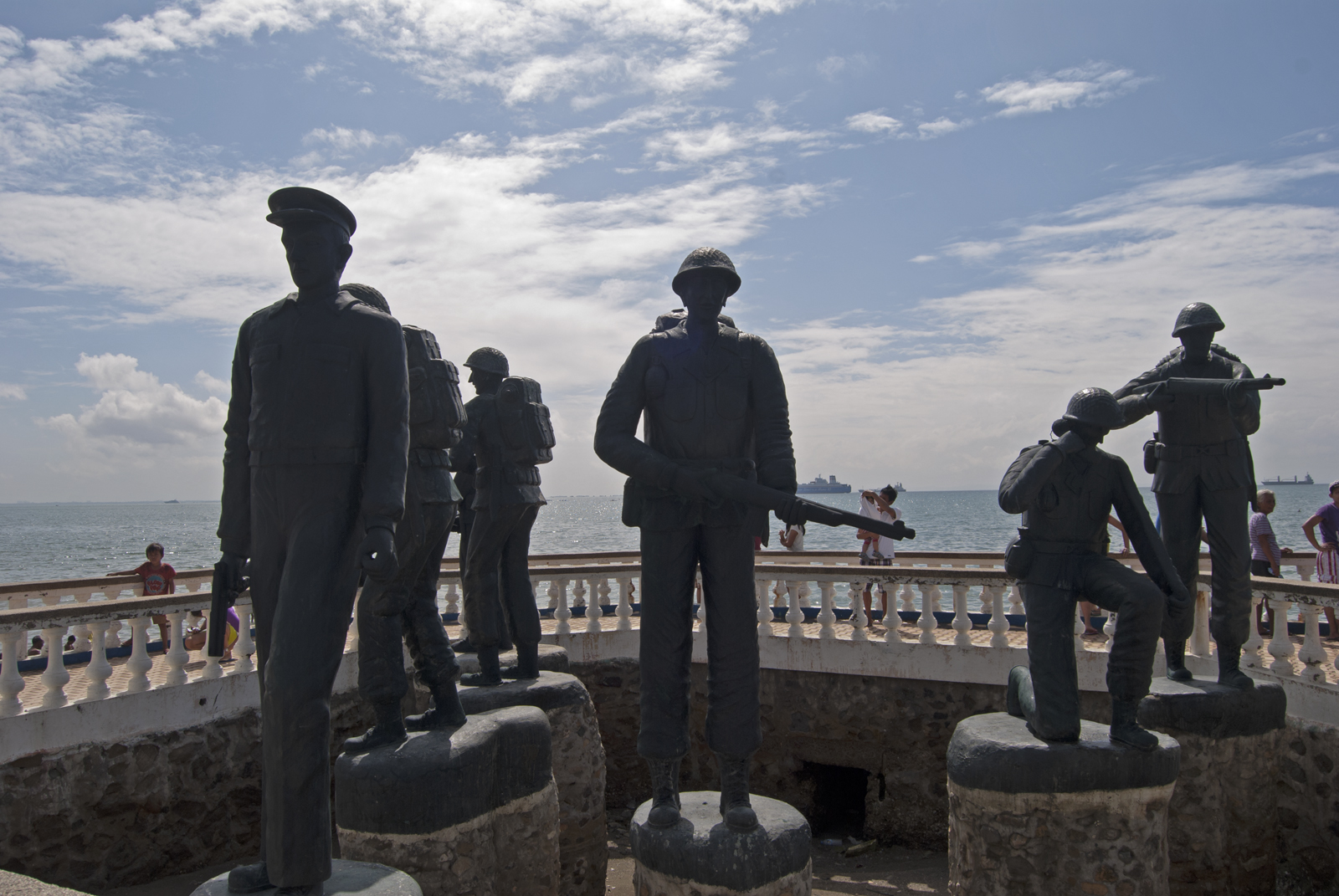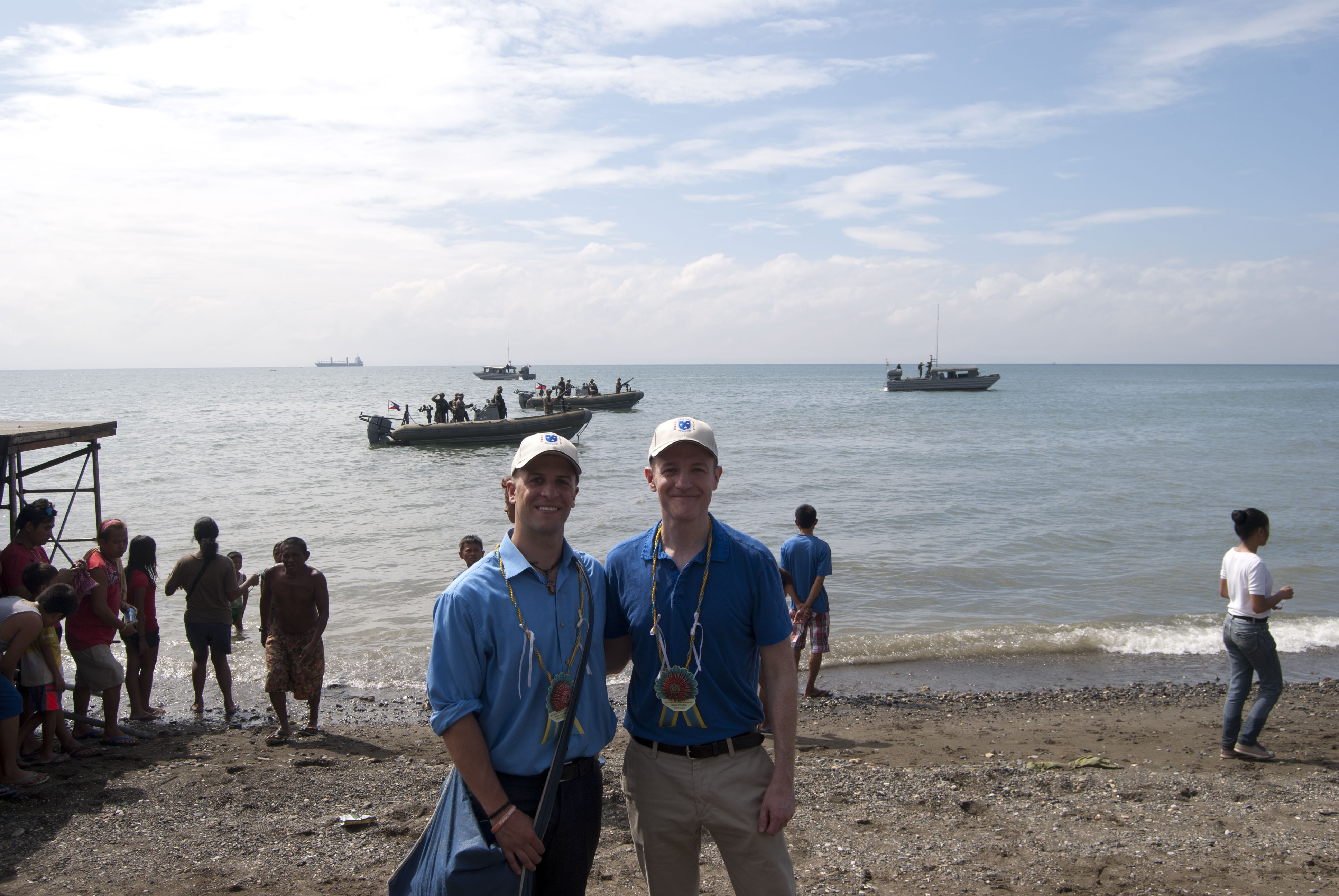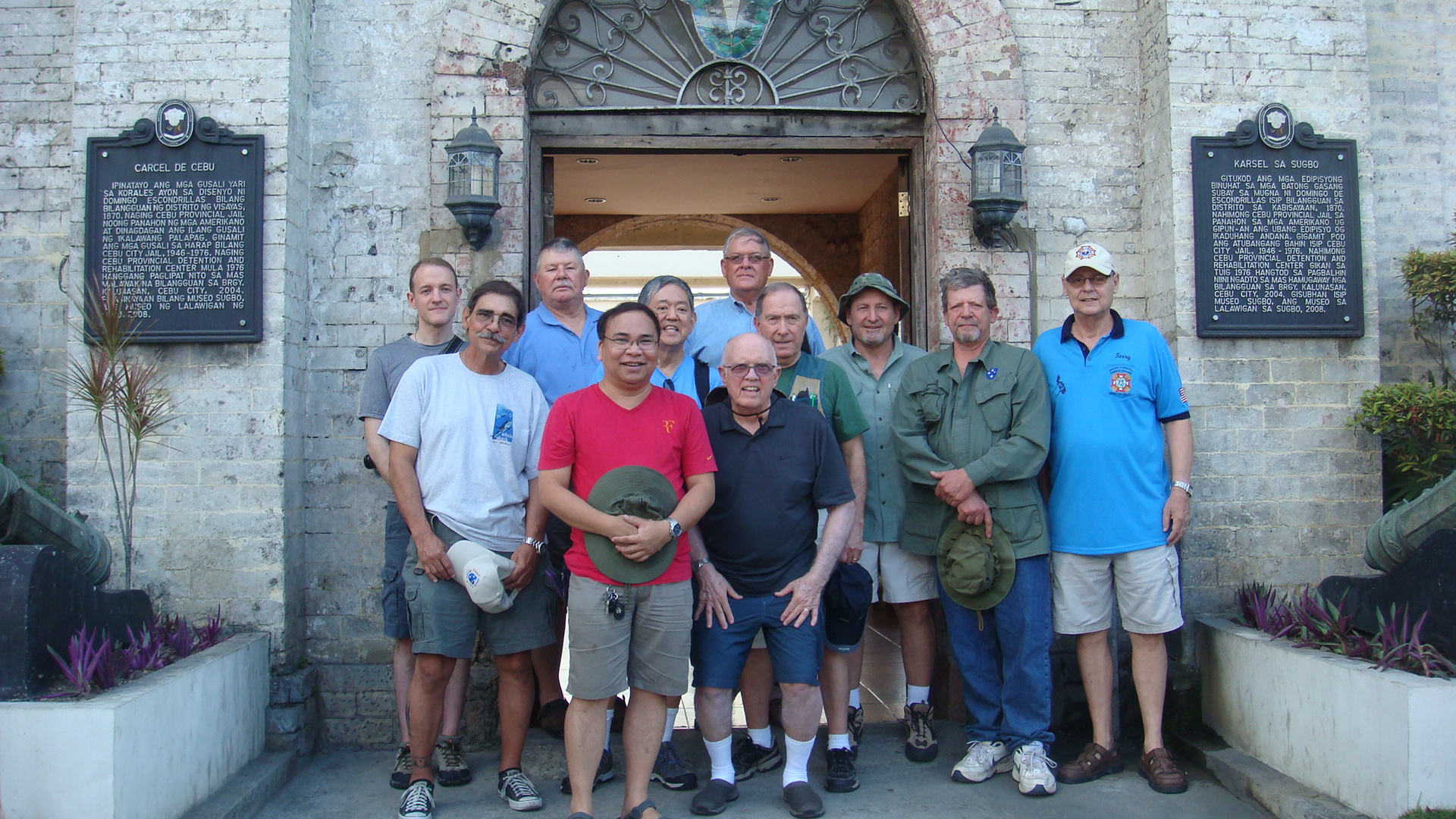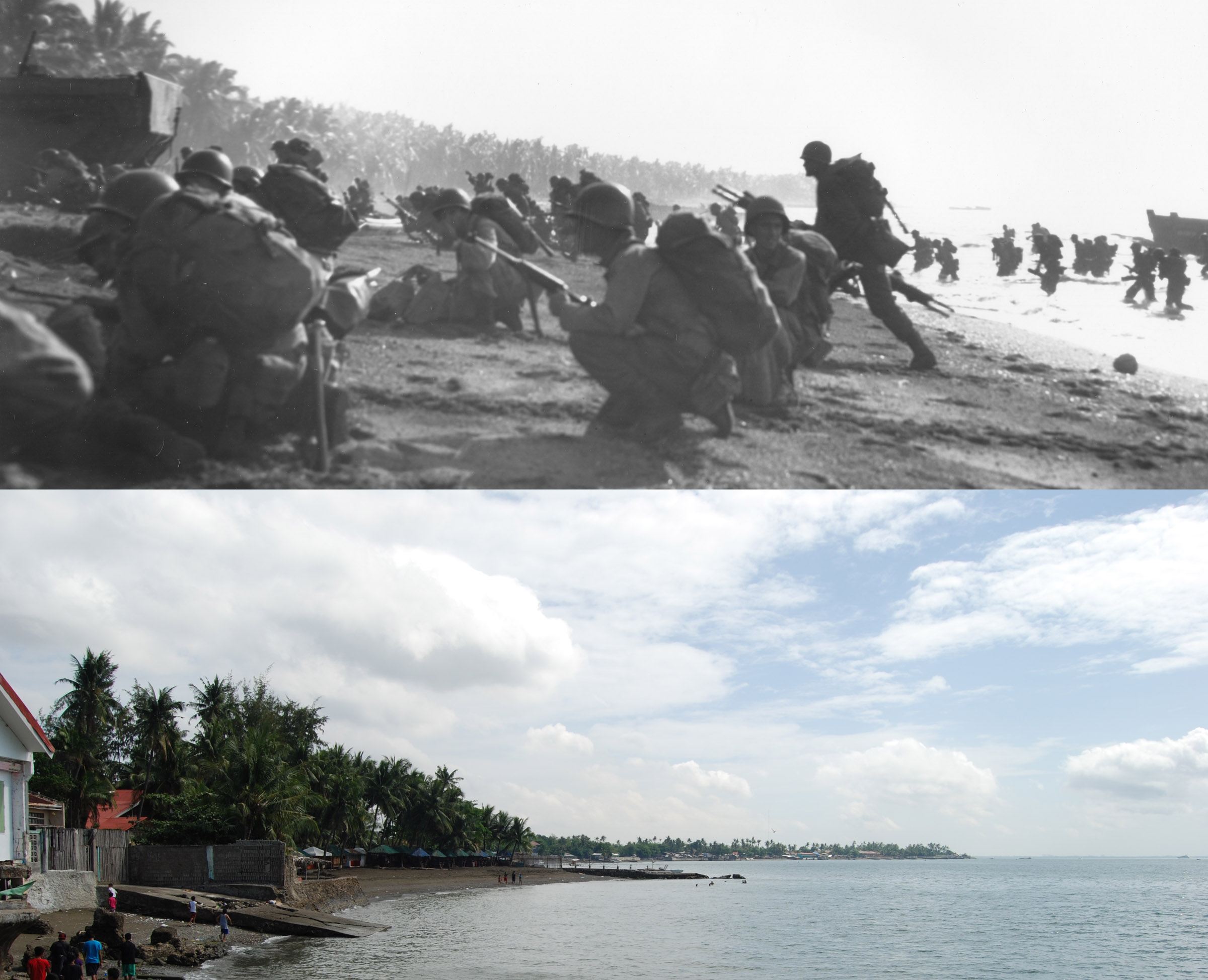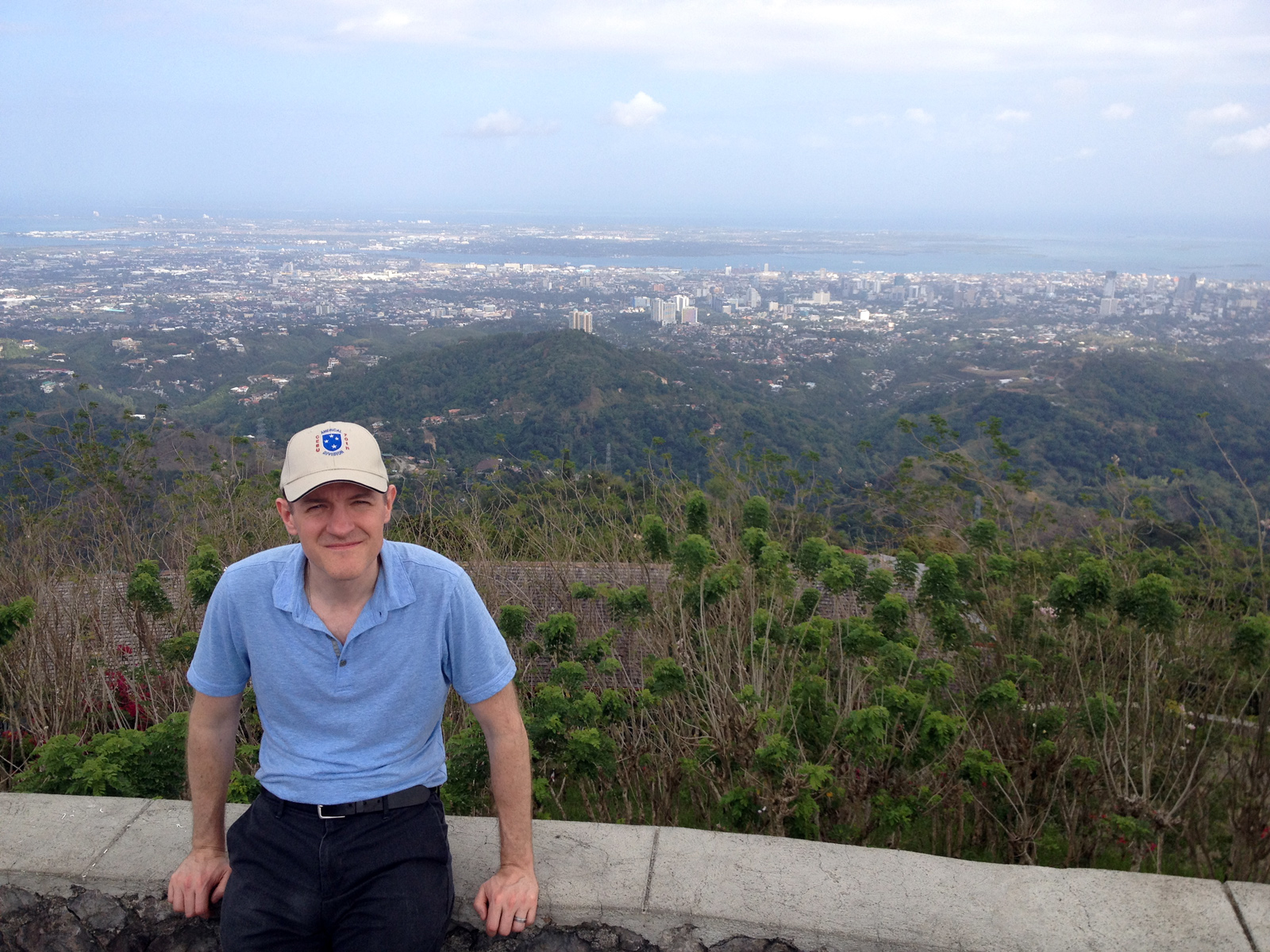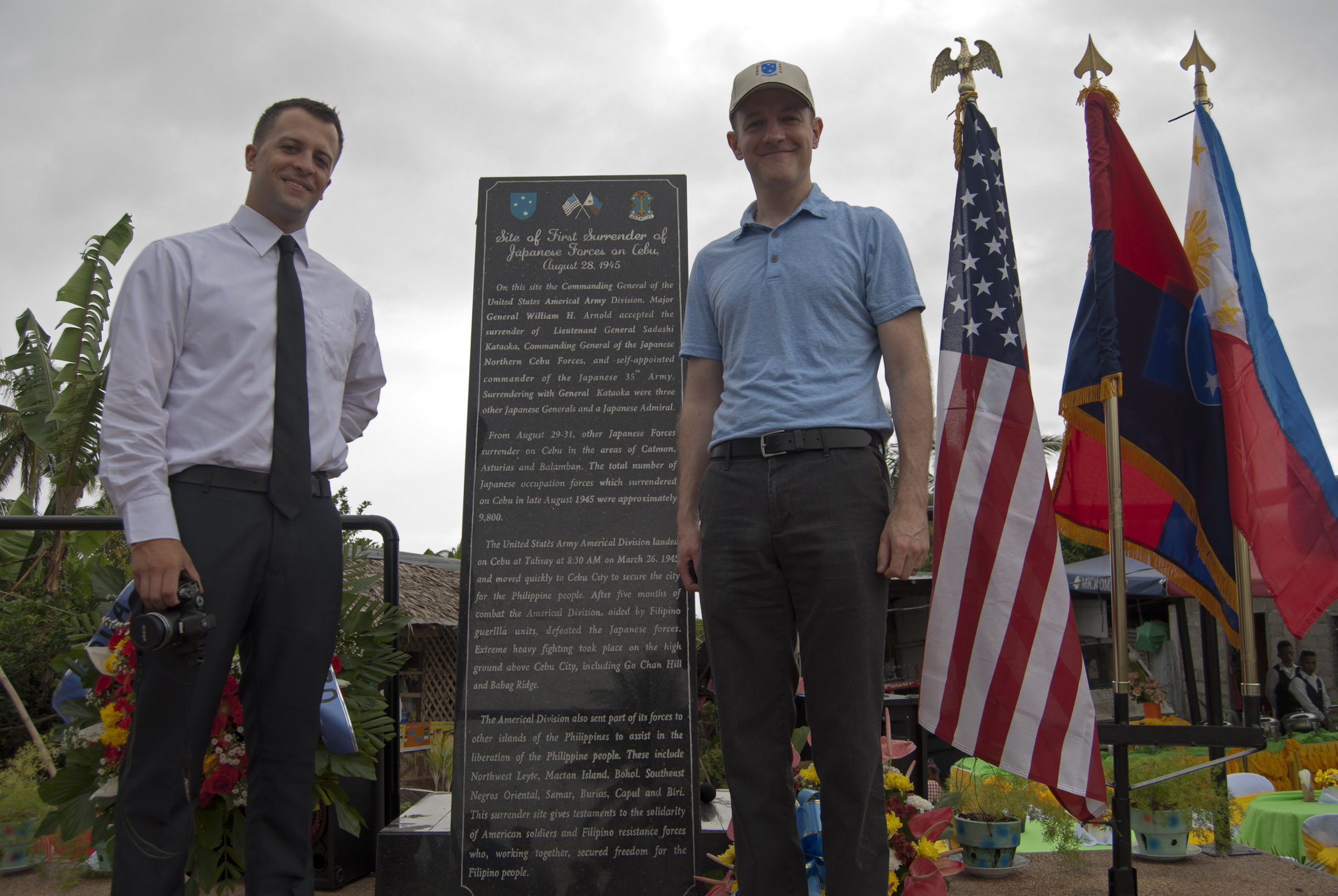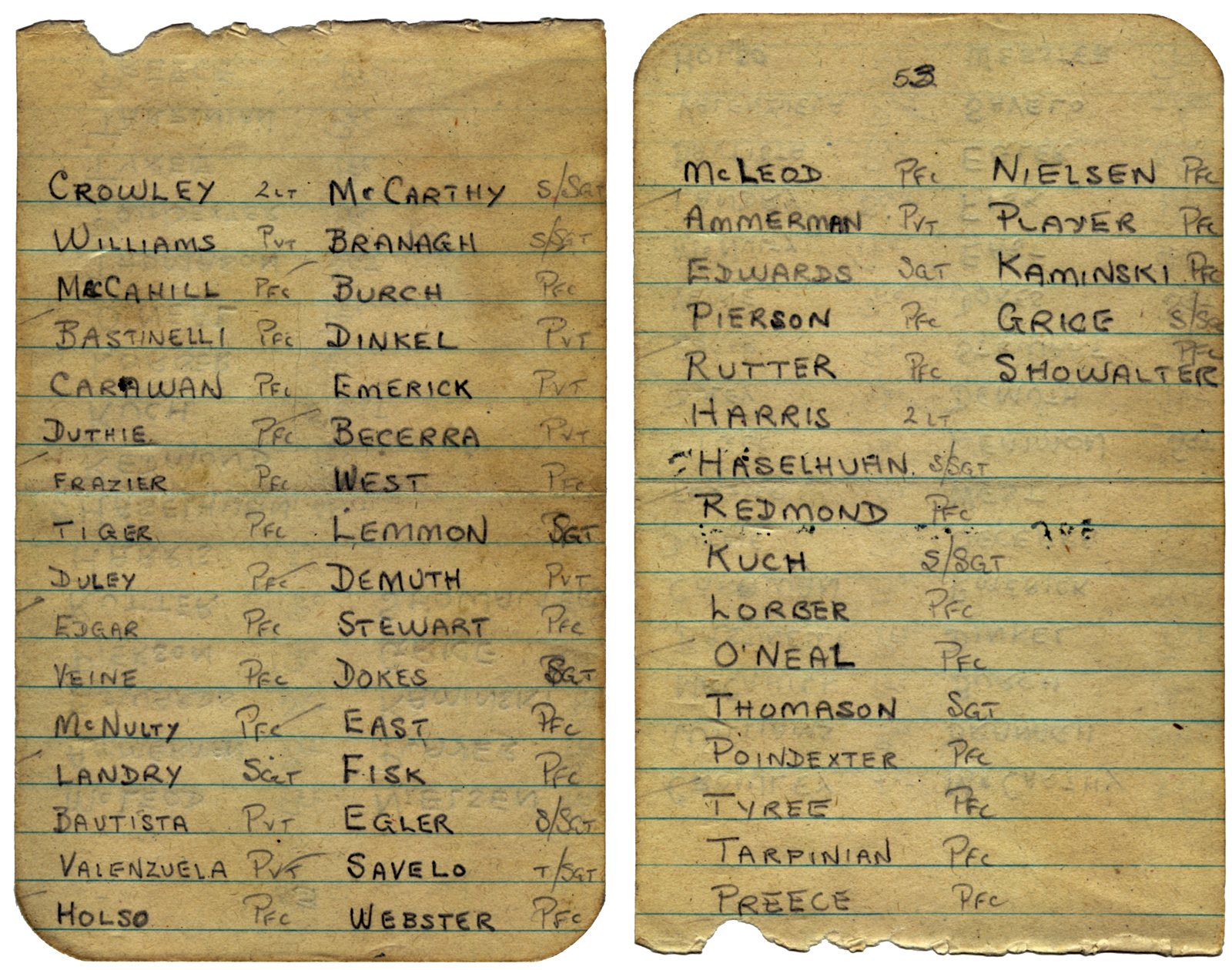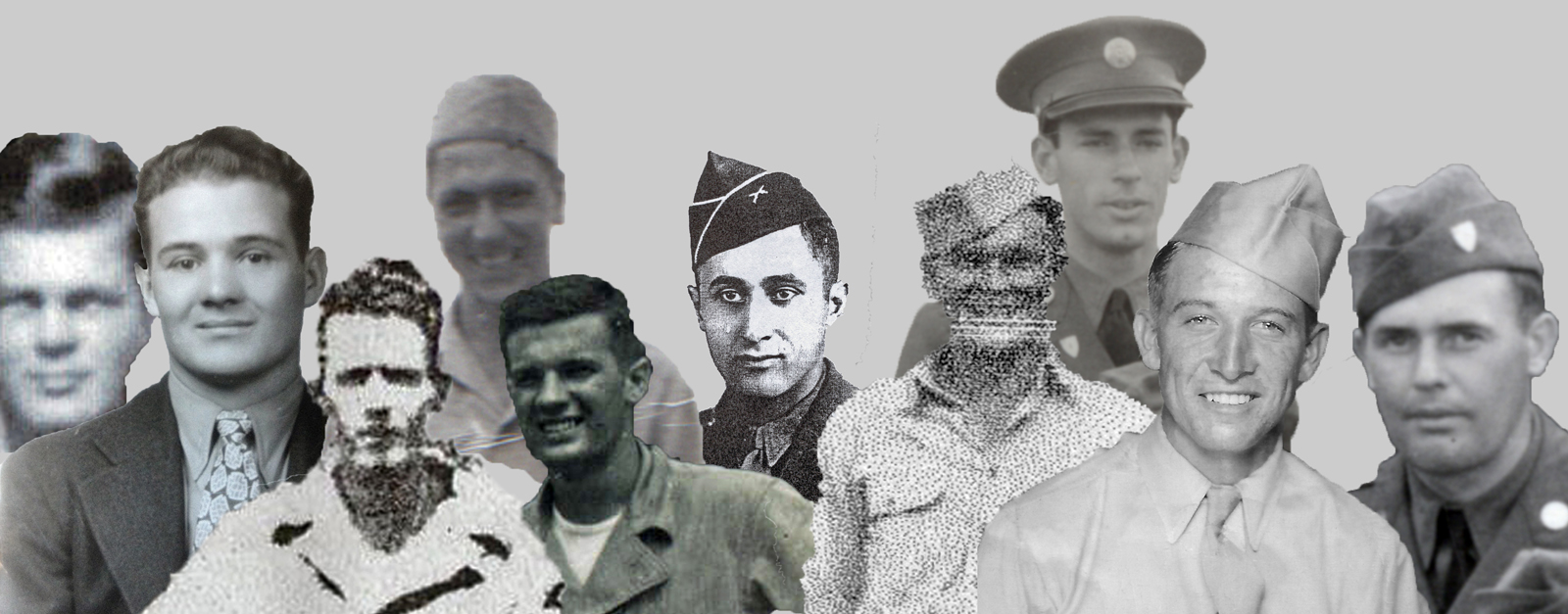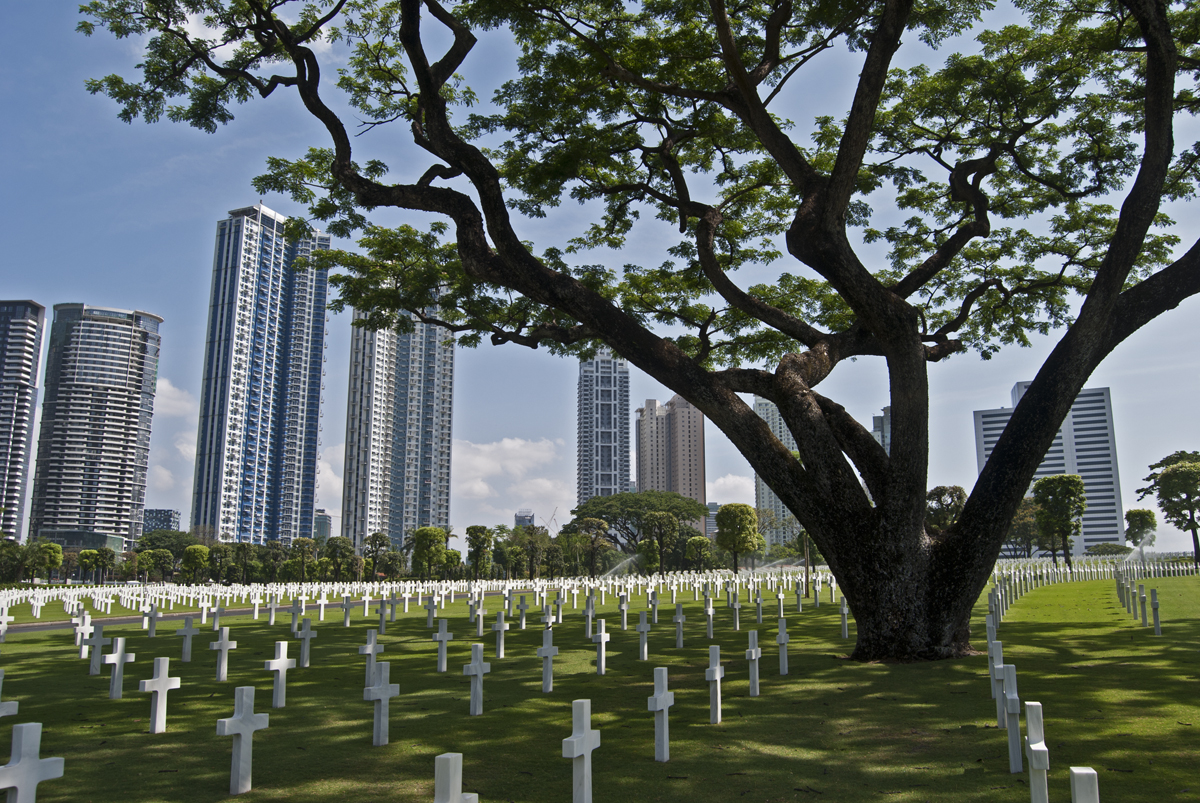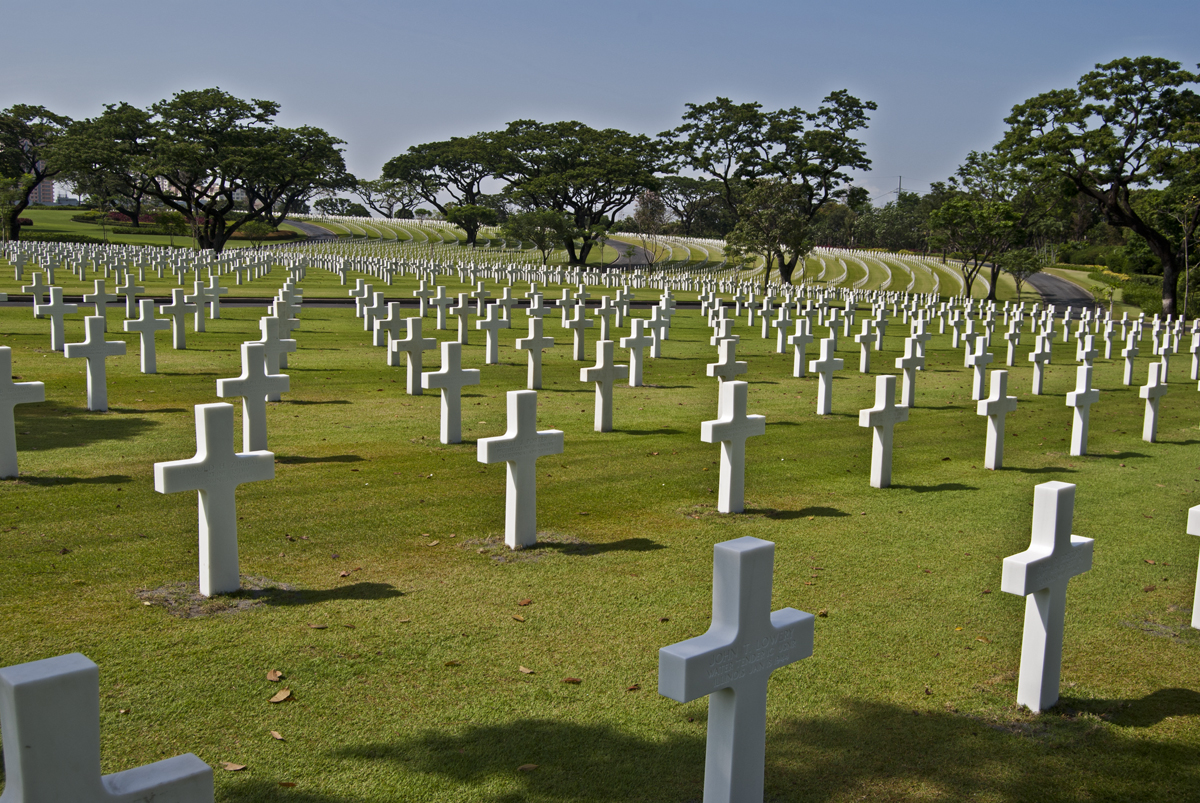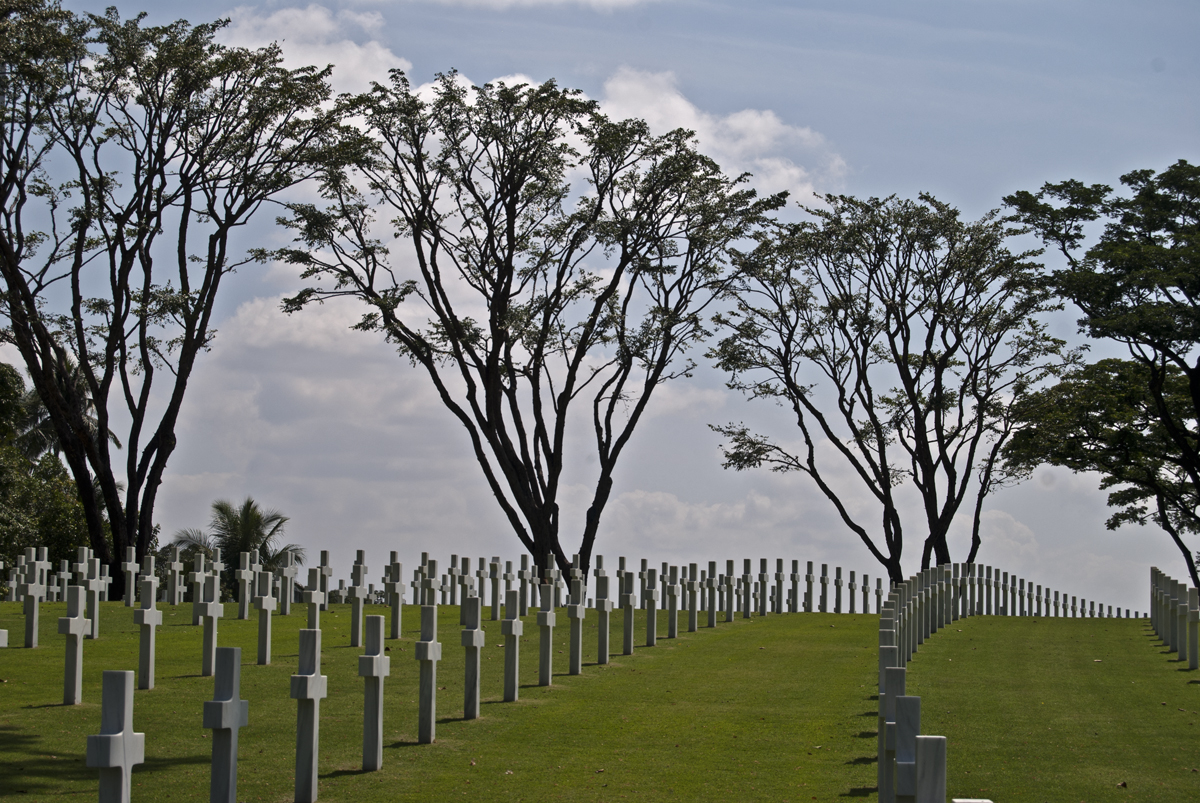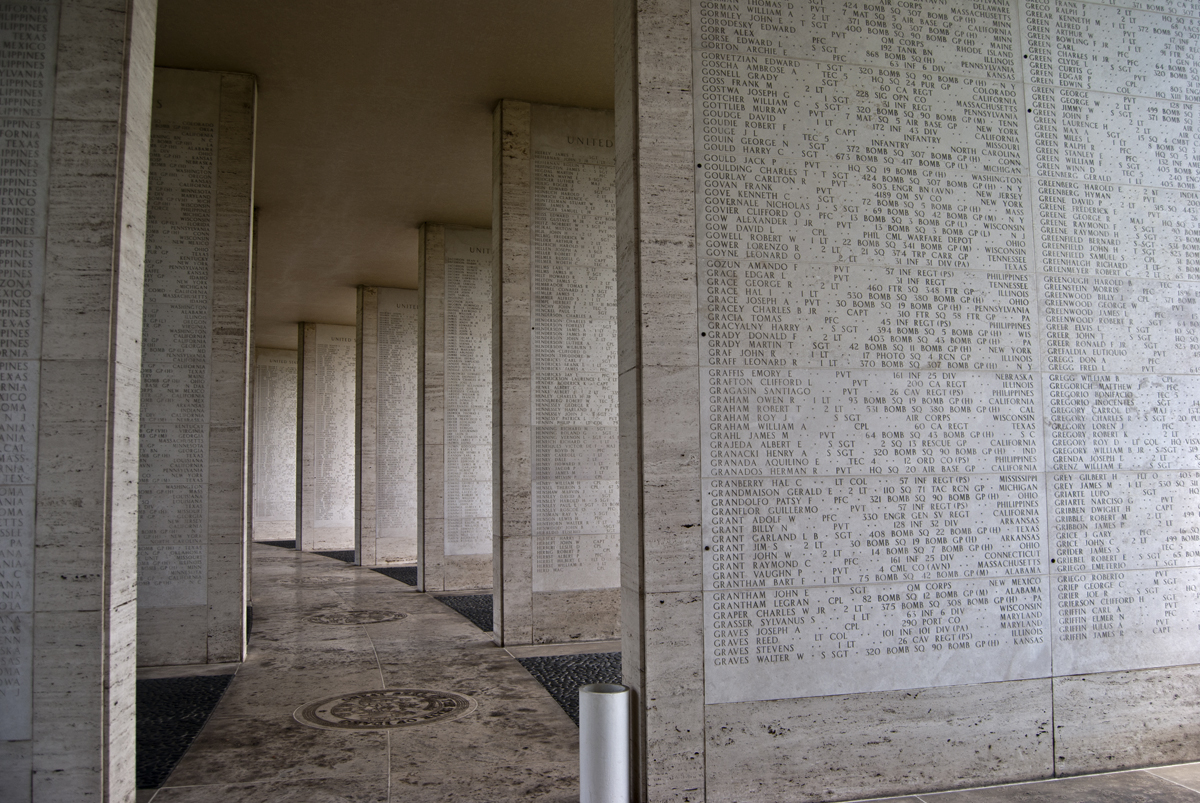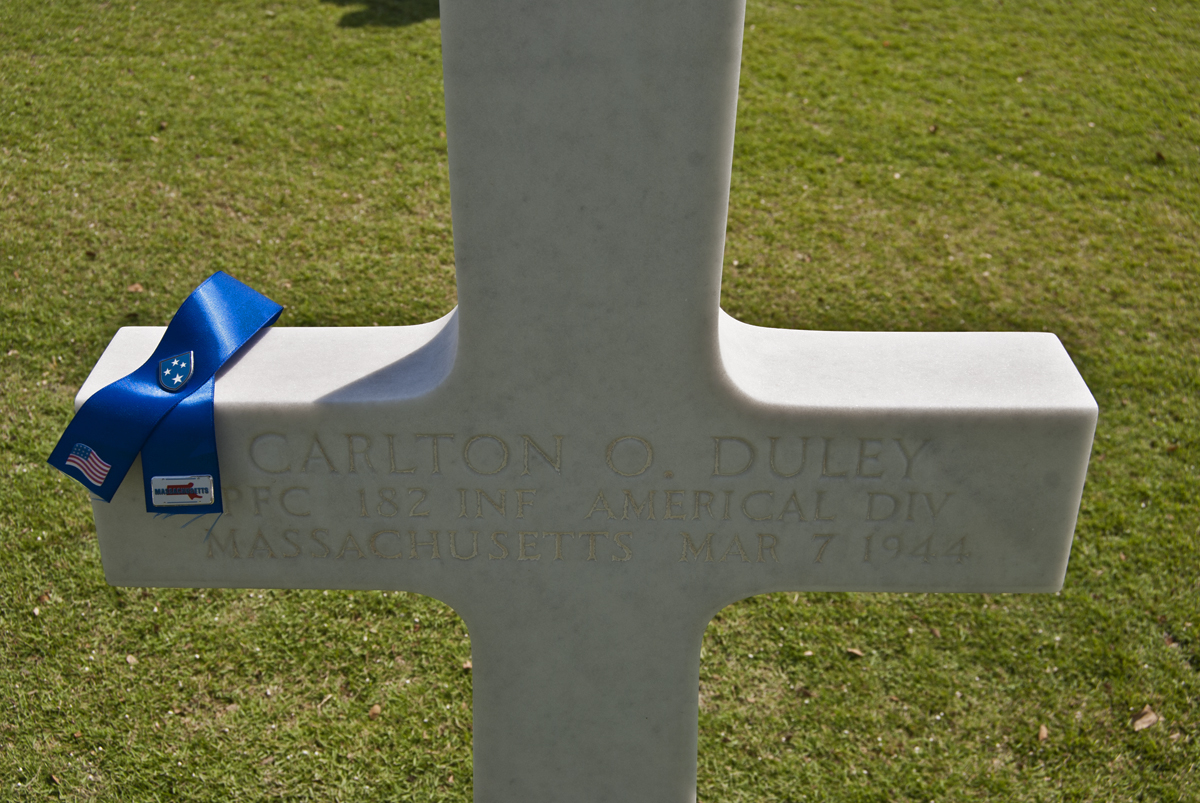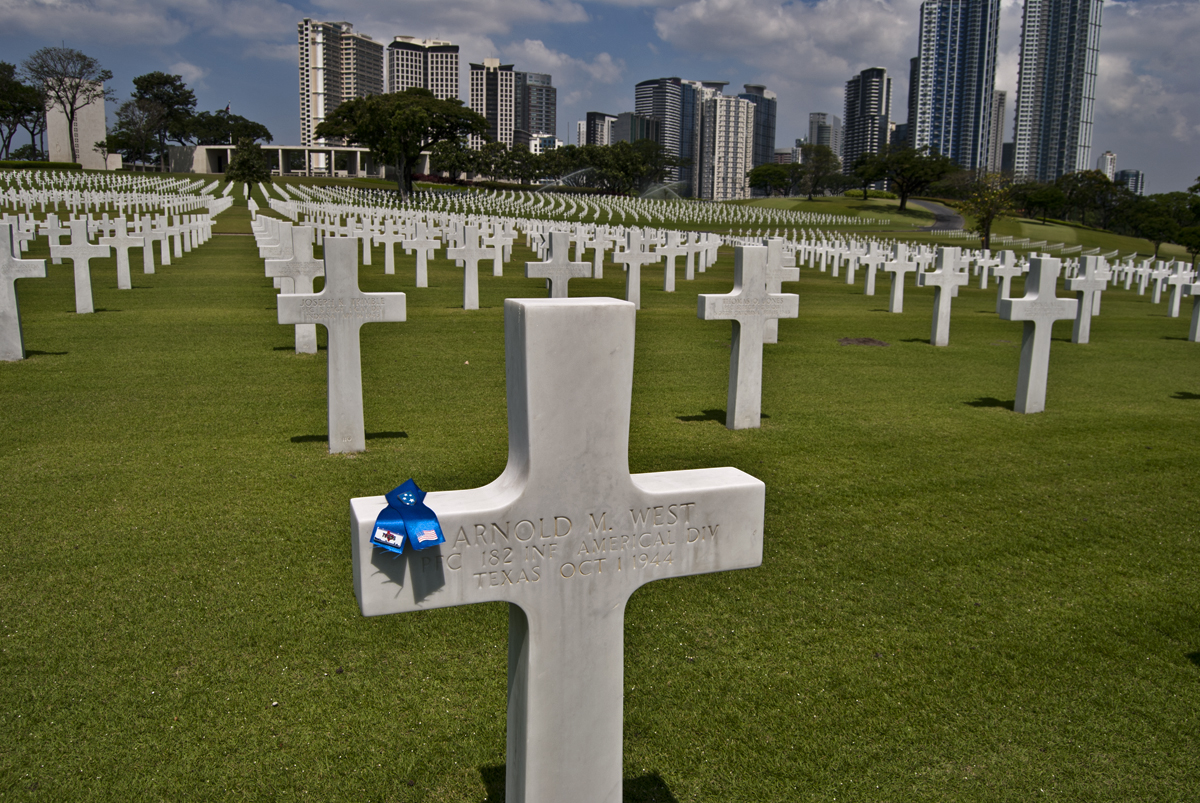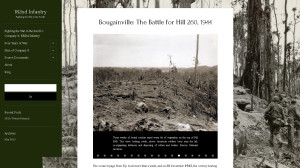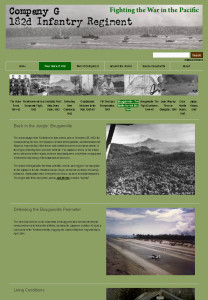(Note: for a detailed introduction to the Americal Division Veterans Association’s 2015 trip to Cebu, along with links to other stories from the trip, read our introductory story Cebu 2015: The Ghosts of World War II, 70 Years Later. Learn more about the World War II battle for Cebu here.)
On 26 March 2015, the people of Cebu, in conjunction with the military forces of the Philippines, commemorated the 70th anniversary of their liberation from Japanese occupation during World War II (see Photo #1 for a view of the real landing). In an alternately moving and exciting ceremony, the amphibious landing of the Americal Division on the shores of Talisay Beach was reenacted, complete with a mock naval bombardment. I had the honor to watch the landing operation and ensuing “battle” from a podium on the beach, alongside members of the Americal Division Veterans Association and leaders of the Philippine military.
We awakened to a rainy morning at our hotel in Cebu City, and boarded our van for the short ride down the coast to Talisay. Upon arriving, we were all taken aback by the scale of the festivities. On a small street running parallel to the beach, huge tents were set up to shelter rows and rows of seats for spectators. A podium had been erected for dignitaries. It was difficult to even make our way forward through the thick crowds of Cebuanos. We were very pleased to see that seats had been reserved for us in the front row – not far from Filipino military veterans, including some who had fought the Japanese as guerrillas during the occupation. Joining our group this morning was Sam Arnold, the great-grandson of Lieutenant General William Arnold, who commanded the Americal Division during the Cebu campaign. Sam was whisked away for a quick TV interview as preparations for the festivities continued. Media coverage of the event was heavy, and stories can be read here, here, here, and here.
We were all finally called to attention, and the day’s events began. The festivities began with an impressive military parade, featuring soldiers and sailors of the Filipino military, along with several armored vehicles. They marched in fine order past the main podium, where they saluted dignitaries and military officials (see Photo #2). Next came lines of police and firemen. The tail end of the parade was comprised of many groups of local youths from military academies and training institutions.
Once the parade had wrapped up, we all stood for the raising of the flags of each of the involved nations. The Philippine flag was the first to be raised. Next was perhaps the strangest moment of the day – the raising of the Japanese flag over Cebu, accompanied by their national anthem. It was a wonderful token of peace and forgiveness, but it certainly seemed a bit surreal, knowing what horrible war crimes were inflicted upon the people of Cebu during the occupation. Lastly, the American flag was raised to the strains of the Star Spangled Banner. Following the flag raising, wreaths were placed at the base of the flagpoles, including one wreath placed by Roger Gilmore of the Americal Division Veterans Association and John Gilbert of the local VFW. The mayor of Talisay, Johnny De los Reyes, delivered an energetic speech, which was unfortunately not in English, so we did not know what he was saying! You can view the whole ceremony and parade on YouTube here.
We finally moved on to the final, most exciting portion of the day. The speakers wrapped up their remarks, and the crowd began to shuffle over to the beach, just 100 yards away. With the thick crowd, I began to worry that we would not even be able to see the reenactment. As we mingled through, the crowd parted and we were waved up to a temporary platform with seats for the dignitaries. It was right on the water’s edge – a front row seat. Before us we could see a number of fake straw huts built on the dark, wet sand of the beach. By this point the rain had ended, and it had turned into a pleasant (though muggy) day with light clouds. Offshore we could see a number of small military craft circling in the distance. The crowd gathered in a semi-circle around the “battle front” and a public address announcer started the event by describing the situation on 26 March 1945. Dramatic music was added for effect, and the show was on. First ashore were Filipino special forces, simulating US Navy Underwater Demolition Teams (the forerunners of Navy Seals) who cleared the beach of mines in advance of the landing (see Photo #3). They were dropped off by fast, armed rigid hull inflatable (RHIB) boats. After completing their mine clearance duties, they were picked up once again by the RHIBs and made a rapid exit out to sea.
With the mines cleared and the beach prepared for assault, the real fun began. The crowd yelped with surprise and delight as the “US Navy” began to bombard the shore, and explosions ripped through the waterfront. What was in fact carefully placed explosive effects, combined with sound effects on the PA system, did a nice job of simulating the explosive power of a naval shore bombardment. The gentle water lapping the shore burst skyward dramatically (see Photo #4), and the straw huts on the water’s edge exploded in huge fireballs (see Photo #5), while the crowd gasped in awe. You can see this portion of the “fighting” in the video I shot, posted at the bottom of this story.
While the shore bombardment was exploding on the water’s edge, “Japanese” troops moved into place to defend the beach. These soldiers were played by local Filipino youths. In fact, during the real invasion, the Japanese did not resist the invasion in force. Instead, they fell back into well defended mountain positions to await the soldiers of the Americal Division. For dramatic purposes, the 70th anniversary reenactment took some liberties with the way things actually happened. As the Japanese defenders took their positions behind the now-burning grass huts, Filipino landing craft advanced on the beach, simulating the Americal Division. They disgorged soldiers on the water’s edge (see Photo #6), as machine gun blasts (once again, carefully placed explosive charges) tore up the beach sand. A gun fight ensued, resulting in the slaughter of the Japanese troops (see Photo # 7). The children in the crowd could be heard laughing as some of the Japanese reenactors died in overly melodramatic fashion. At last, the beach was secure, and the day’s events ended.
It was quite a scene to behold. While some liberties were taken with the facts of the landing, the overall impact of the event was impressive. Even more impressive was the fact that the people of Cebu still remember that day, and go to great lengths to commemorate it. In fact, this ceremony is an annual event. The Americal Division’s sacrifices are remembered with great fondness, and a statue on the beach (see Photo #8) – a column of advancing soldiers – means that it won’t soon be forgotten.
This video shows the dramatic explosives used to simulate naval gunfire bombardment:
Read the next piece in this series here: Cebu 2015 Part II, Tracking the War in Cebu City.

